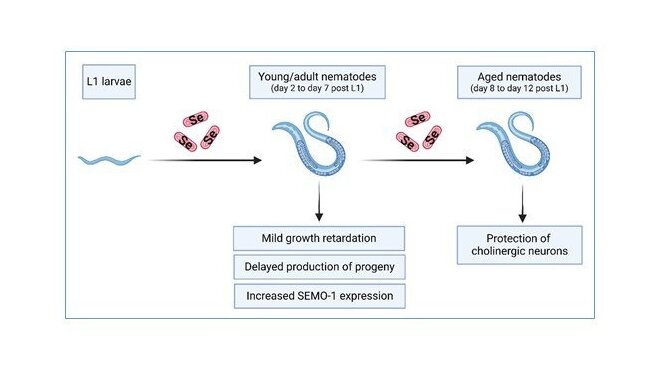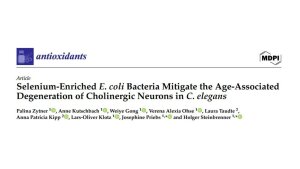
Zytner et al., 2023
Screenshot: Josephine PriebsAbstract
Selenium (Se) is an essential trace element for humans and animals, but high-dose supplementation with Se compounds, most notably selenite, may exert cytotoxic and other adverse effects. On the other hand, bacteria, including Escherichia coli (E. coli), are capable of reducing selenite to red elemental Se that may serve as a safer Se source. Here, we examined how a diet of Se-enriched E. coli bacteria affected vital parameters and age-associated neurodegeneration in the model organism Caenorhabditis elegans (C. elegans). The growth of E. coli OP50 for 48 h in medium supplemented with 1 mM sodium selenite resulted in reddening of the bacterial culture, accompanied by Se accumulation in the bacteria. Compared to nematodes supplied with the standard E. coli OP50 diet, the worms fed on Se-enriched bacteria were smaller and slimmer, even though their food intake was not diminished. Nevertheless, given the choice, the nematodes preferred the standard diet. The fecundity of the worms was not affected by the Se-enriched bacteria, even though the production of progeny was somewhat delayed. The levels of the Se-binding protein SEMO-1, which serves as a Se buffer in C. elegans, were elevated in the group fed on Se-enriched bacteria. The occurrence of knots and ruptures within the axons of cholinergic neurons was lowered in aged nematodes provided with Se-enriched bacteria. In conclusion, C. elegans fed on Se-enriched E. coli showed less age-associated neurodegeneration, as compared to nematodes supplied with the standard diet. Zytner et al., 2024Externer Link
